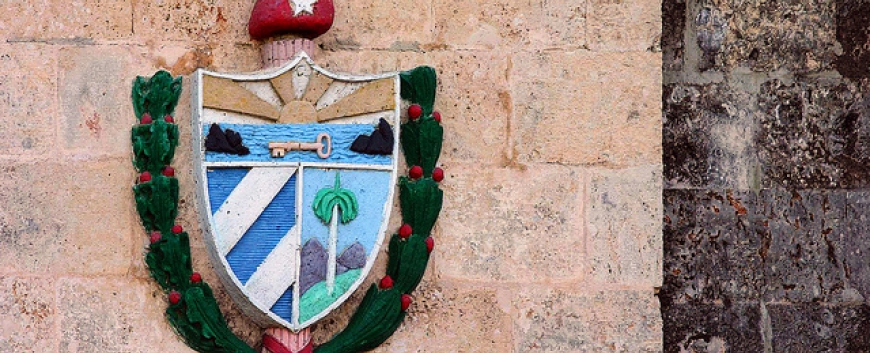The National Symbols of Cuba
Surely, we all know that rum, cigars and jazz musicians are the epitome of a mesmerizing Cuba, of which most of us cannot get enough. But when it comes to the national symbols of Cuba, they are as patriotic and noble as they can be:
The Flag
The three colored Cuban flag was first raised in the city of Cárdenas (Matanzas Province) in 1850, when a group of revolutionaries revolted against the Spanish colonial occupation.
The three blue stripes represent the sections the Island was divided into, the two white stripes suggest the purity of the intentions for the people’s independence, while the equilateral triangle stands for freedom, equality and fraternity, as France was once advocating as well. The red color stood for the blood that would be shed in order to claim the independence; with the white, single star as symbol of absolute freedom among its people.
The Coat of Arms

Adopted in 1906, the Cuban Coat of Arms is the official heraldic symbol of Cuba. It consists of a shield, supported by an oak branch on one side and a laurel wreath on the other.
The golden key symbolizes Cuba's key position amongst the two Americas, therefore from where the name "The Key to the Gulf" comes from. The rising sun stands for the emergence of a new nation. The three blue stripes, separated by two white ones, have the same meaning as within the flag - the sections the country was divided into at the time. The Royal Palm – known as another national symbol - represents the virtuous, undefeated resilience of the Cuban people.
The National Anthem
Known as the Bayamo Anthem, the Cuban national anthem was written and first heard during the Battle of Bayamo in 1868. Bayamo, the capital of Granma province, was the site of many key battles in Cuba's independence wars against Spain.
Pedro Felipe Figueredo was a lawyer, poet and musician, and a General during the Ten Years’ War against Spain. When the Cuban commander received the surrender of the Spanish at Bayamo on October 20, 1868, the people asked Figueredo to write a celebratory anthem, which is when the National Anthem was born.
Two years later, Figueredo was captured by the Spanish. As he stood to be executed by firing squad, he shouted the words from his anthem...
“Morir por la Patria es vivir.”
(To die for the country is to live.)
National flower
An endemic jasmine species used by the Cuban women in the wars of independence to pass messages to the battlefields - the White Mariposa or Butterfly Jasmine - symbolizes purity, rebelliousness and independence.
The flower usually grows in humid places, but it is can also be found in the yards and gardens of many Cuban houses.
National bird
The Tocororo is another national symbol due to its feathers that showcase the colors of the Cuban flag: red, blue and white.

Photo via Dominic Sherony
The Tocororo or Cuban trogon as it is also called is an autochthonous bird related to the quetzal.
National tree
Although it is not native of Cuba – the Royal Palm - is present in the country's whole landscape, symbolizing the unquestionable enduring character of the Cuban people.

Photo via Lezumbalaberenjena
Its height varies between 40 and 50 feet and it is crowned with a beautiful crest. Its majestic structure and height, as well as its strength and its many uses have earned it to be called throughout the country the queen of the Cuban fields.














